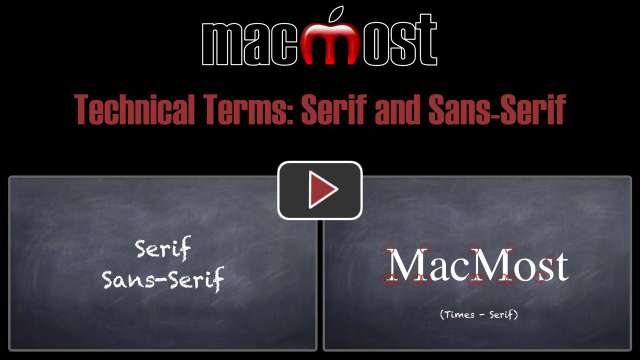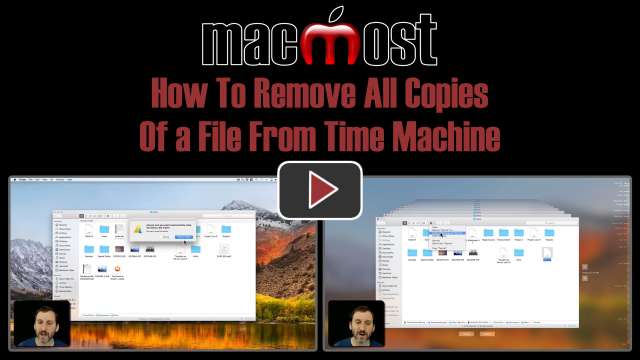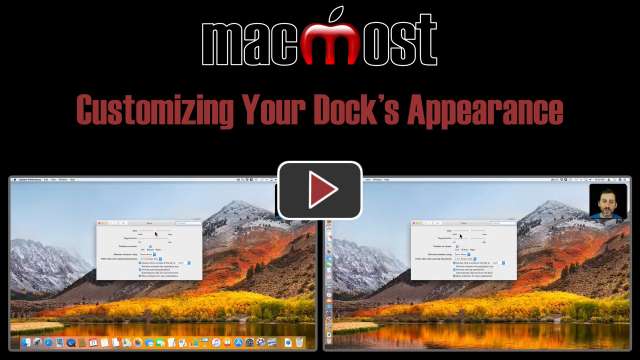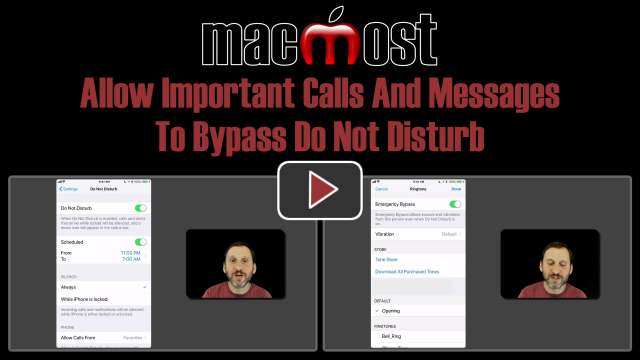Another slow news week as Apple probably isn’t going to announce anything new until the MacWorld Expo in early January.
But the iPhone sales division does seem to be busy. AT&T is now allowing customers to order iPhones online, and then activate them at home. Apple started allowing people to purchase iPhone gift certificates a few weeks ago as well, giving you two ways to surprise someone with an iPhone under the tree this year.
In addition, rumors are flying that Walmart will soon start offering iPhones. This may be a good place to put iPhones since a lot of medium-sized cities and towns in the U.S. don’t have an Apple store, but they usually have a Walmart.
Iconfactory engineer Craig Hockenberry, who worked on the iPhone apps Frenzic and Twitterific, wrote an open letter to Steve Jobs complaining about how there are so many free and 99 cent applications in the iPhone App Store that developing more useful and complex apps is becoming uneconomical. He has a point. You can read his letter here.
If you were lucky enough to get an new MacBook of any flavor in the last few months, Apple has a firmware update available through the Software Update feature of Mac OS X. Looks like it mostly fixes issues with the power adapter and battery indicator lights.
Surveys of market share come out all the time. This week, one appeared that put Mac at almost 9 percent of all the users out there. That’s a pretty high number, considering that it wasn’t too long ago we were under 5 percent.
Even more surprising is that on the Web, Internet Explorer, the main Windows-only browser, is now under 90 percent in browser share. This means that Firefox is gaining and has a real foothold.
So looking just at the first number, consider that 9 percent. That might not be too impressive if you look at it from an OS stand-point. It means that Windows has around 90 percent. That’s extremely dominant.
But if you look at it from a hardware stand-point, it is interesting. Pretty much all of the 9 percent is Apple hardware. But of the other 91 percent, the hardware is divided into a number of manufacturers: Dell, HP, Lenovo, Acer, Toshiba, and so on. I haven’t seen any recent numbers, but I’d have to imagine that Apple is near the top of that list as far as machines sold.
But what the increasing Mac market share, and decreasing IE dominance, mean for us is that hopefully Windows-only Web sites and applications will be a thing of the past. Microsoft itself has shown a great commitment to this with the latest release of Office for Mac. And Electronic Arts at least seems to be trying hard to include Macs as an available platform for every new game.
I think the software industry is doing a good job of including Mac versions right alongside their Windows ones. In addition, hardware is getting better too. There are still some manufacturers that don’t seem to provide Mac drivers or support. And then there are some that do strange things like Fujitsu who offer Mac-specific scanners instead of making their scanners compatible with both Mac and Windows.
Even online media seems to be paying attention to Mac more and more — for instance both Amazon and NetFlix made sure to work on versions of their media players that work on Mac.
But Apple still has work to do to get the word out about this. For instance, I tried to convince a friend of mine to get a Mac instead of a new PC and his biggest fear is that he won’t be able to open his old Word and Excel files, even though I told him about how TextEdit can do it, iWork can do it, OpenOffice and NeoOffice can do it, and he can also get Microsoft Office for Mac for probably less cash than Office for Windows.
Until perceptions like this change, it will be harder and harder for the Mac to gain market share.
Learn how to control the Mac OS X Finder using only the keyboard. You can navigate through the menu bar, menu bar status items, Finder windows and even the Dock.
The holiday season got off to a good start for Apple, with strong Black Friday sales. This was despite the fact that sales deals offered by Apple on that day were no more special than those in previous years. One interesting addition to the Apple offerings is a gift card good for the purchase of an iPhone. This solves the problem of how to surprise someone with an iPhone while being required to sign up for service before leaving the Apple Store.
Apple continued into the holiday season by offering free shipping on Monday — traditionally a day for special sales from online stores.
Topping Apple news this week was the hoopla over a report claiming that an old Apple knowledge base article was instead a call from Apple for Mac users to start buying anti-virus protection. You can check out the MacMost blog post for details.
Lots of news items about Mac viruses this week, despite the fact that no new virus was involved in any of the news.
It seems that an old tech note about using multiple anti-virus software on Macs was taken as an official word that Apple is now recommending the use of anti-virus software on OS X. It looks like the first mention might have been in a Washington Post column on Dec. 1. And then it was picked up by at least 100 other journalists and bloggers.
But the recommendation was actually an Apple knowledge base article that was a year old, and simply had a modification date shown as November 21. The article was very vague, and simply states: “Apple encourages the widespread use of multiple antivirus utilities so that virus programmers have more than one application to circumvent, thus making the whole virus writing process more difficult.”
But what does that mean? Does it mean that YOU should be using multiple AV utilities? Or does “widespread use” mean that Apple encourages many vendors to provide AV utilities. Certainly the second one makes the most sense.
If there was one Windows AV program that everyone used, then virus creators would simply build viruses that would circumvent that one program. But because there are dozens of AV Windows programs out there, all being updated by different teams, it is very hard to create a virus that gets through enough of them to cause a problem. So having more than one AV program with good marketshare makes sense.
Apple has reacted quickly to this re-reporting of its knowledge base article by removing the article and declaring it inaccurate. Apple spokesperson Bill Evans told CNET that Macs don’t need anti-virus programs because “The Mac is designed with built-in technologies that provide protection against malicious software and security threats right out of the box.”
And lets face it, there is no threat. There is no virus infecting Macs with OS X. None.
From time to time we hear about a “new Mac virus” but it always turns out to be a proof-of-concept idea by someone, or a malicious program that requires you to go through several steps and warnings before it causes any harm — hardly “viral” by definition.
Why are Macs so immune to viruses? Well, there are several reasons.
One is that the core of Mac OS X is Darwin, which includes a lot of open source code. Open source code is generally considered more secure than closed source, because it can be reviewed by any programmer or security expert who can help improve it.
Another reason is Apple’s dedication to update Mac OS X quickly whenever a possible issue arises. Several times we’ve seen proof-of-concept malicious software appear and Apple patch OS X quickly in reaction.
Of course a big reason is also marketshare. By definition a virus needs to infect others and spread. If 90% of the personal computers out there are using Windows, then it makes more sense for virus creators to target that platform.
So how long will be be safe from viruses? I think there is considerable lag in the virus world. Any time I have had to disinfect a PC, it always seems to have viruses from years past on it — ones created in 2000, 2003, or whatever. The machine I am disinfecting is also usually very out of date, using an old copy of Windows and not updated with patches properly.
So even if we saw the first real OS X virus in 2009, I think it would take years for it to become a common problem. And that would only happen if Apple decided not to react quickly and provide us with updates, which isn’t going to happen, realistically.
So, do you need to buy some AV software for your Mac? I say no. If a real threat appeared, Apple would most likely provide us with a patch and a way to remove the virus. So don’t waste your money.
AV software and the Mac vs. PC debate are heated subjects. If you agree or disagree, leave a comment below and let me know what you think.
Dominating Apple news this week was the release of version 2.2 of the iPhone OS. This included some pretty interesting new features, such as Google Maps street view and the ability to download podcasts directly on the iPhone instead of requiring them to be added to iTunes on your Mac or PC first. See episode 162 of MacMost Now for more details.
QuickTime update 7.5.7 seems to fix a problem where standard definition movie rentals cannot be watched on an HD screen connected to a Mac. This triggered an HD anti-piracy restriction called HDCP, which is meant only for HD content, not the SD content used for movie rentals in iTunes.
An update to iTunes itself, version 8.0.2, adds VoiceOver accessibility to control iTunes, plus a quality fix for making .mp3 files with iTunes. A bug was also fixed that may have prevented connecting to the iTunes Store through a proxy server.
In the United States, this is thanksgiving week, which is followed by “black friday” — a day of shopping and special sales to kick off the holiday shopping season. For the last few years Apple has participated both online and in stores with some special deals. Be sure to check the news at MacMost.com on Friday to see what’s on sale.
Chaperoning elementary school field trips is something every parent should try to do. You’re pretty lucky, though, when your first call to do one is a visit to the Apple Store.
Apparently some Apple Stores offer opportunities to allow schools to bring in classes. The employees then teach something age-appropriate using the Macs in the store.
In this case, we brought about 17 kids in and they divided them up, two per Mac. They actually used MacBooks, MacBook Pros and MacBook Airs. This was done with the sample machines scattered in the store for customers to play with.
For this first grade class, the tasks were simple. First, they had them open up Photo Booth. The kids had a blast taking pictures of themselves, especially when they were shown the special effects.
Then they opened up Pages. I thought it was weird to have them work with a program from iWork, but it was basically an introduction to publishing, and iWork is the publishing tool.
The kids were shown how to make shapes on the page, and then drag their photos from the PhotoBooth panel to the shapes. They then added a bit of text, usually talk bubbles.
While all the kids had experience with computers before, most seemed a little uncomfortable with the track pad as they are used to mice. But instructions like “drag the triangle along the slider to zoom out the picture” were understood easily.
It is obvious what the goal was here for Apple — get the kids to come home with their printouts and “certificate” and talk to their parents about how cool the Apple Store was. Maybe even force a detour into the Apple Store the next time the family goes to the mall.
From the school’s side of things, there was some benefit as well. I think it was a pretty comparable experience to an in-school computer class — at least at the first grade level. The kids gained a little more knowledge about what computers can do and how to use them.
So it was a win-win. A win-win-win if you count me in there. I mean, how often do you get to participate in a school field trip, do some research for work, and have a good time all at once?
Several small announcements and updates this week from Apple. The AppleTV OS version 2.3 was released, with AirTunes streaming and the support for third-party remote controls. That’s a good idea considering how small the Apple remote is and how easy it is to lose. And, of course, the fact that anyone with a home theater setup (AppleTV’s target market) is using a multi-device universal remote anyway.
But in other home theater news, Apple has given in to another draconian anti-piracy measure by building in HDCP (High Bandwidth Digital Content Protection) into the new line of MacBooks. That means that you can’t play protected movies you bought from iTunes on large TVs and projectors unless they are “HDCP authorized.” If you are wondering how this is supposed to prevent piracy, or do anything other than upset Apple’s paying customers, you are not alone.
But then on the other side of the DRM battle, Apple is supposedly in talks with Sony, Warner and Universal to join EMI in allowing Apple to distribute non-DRM versions of their music through iTunes.
This week we are also finally starting to hear Snow Leopard rumors. The Mac OS X 10.6 operating system is potentially ahead of schedule and may ship earlier in 2009 than expected — perhaps in the first quarter.
The free Google app now allows you to search the Web by speaking into your iPhone. It will attempt to translate what you say into text and search the Web or pinpoint a location on the map.
Back in January of 2007 when the iPhone was announced, many people cheered. People cheered the touch screen. People cheered the beautiful design. People cheered the fact that the rumors were right.
I cheered what Steve Jobs said about the built-in Safari Web browser: that it would allow you to surf the real Web. In other words, that it would be a real Web browser, capable of displaying Web pages just like a Mac or PC.














